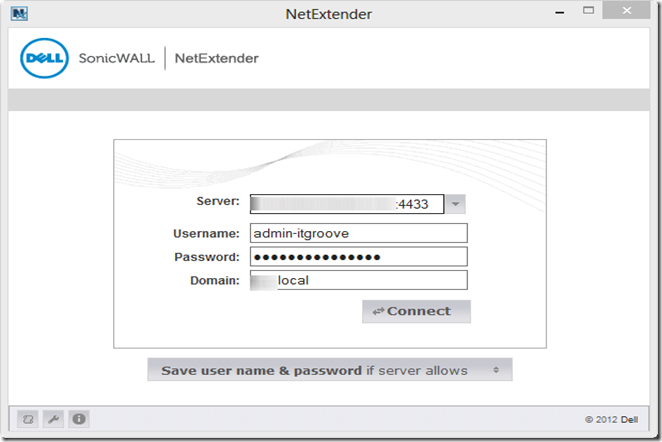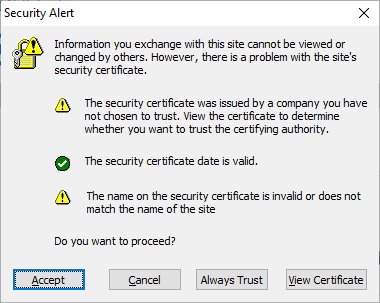

- #Sonicwall netextender client domain how to
- #Sonicwall netextender client domain install
- #Sonicwall netextender client domain update
- #Sonicwall netextender client domain series
#Sonicwall netextender client domain install
On Debian-derived systems, install these dependencies by running (as root): $ apt-get install build-essential libffi-dev perl zlib1g-devĭownload the most recent Authentication Proxy for Unix from.

On most recent RPM-based distributions - like Fedora, RedHat Enterprise, and CentOS - you can install these by running (as root): $ yum install gcc make libffi-devel perl zlib-devel diffutils See Protecting Applications for more information about protecting applications in Duo and additional application options.Įnsure that Perl and a compiler toolchain are installed. You'll need this information to complete your setup. Click Protect to get your integration key, secret key, and API hostname.
Click Protect an Application and locate SonicWALL SRA SSL VPN in the applications list. Log in to the Duo Admin Panel and navigate to Applications. Debian 7 or later (Debian 9+ recommended). Ubuntu 16.04 or later (Ubuntu 18.04+ recommended). Red Hat Enterprise Linux 7 or later (RHEL 8+ recommended). CentOS 7 or later (CentOS 8+ recommended). Windows Server 2012 or later (Server 2016+ recommended). The proxy supports these operating systems: Locate (or set up) a system on which you will install the Duo Authentication Proxy. This Duo proxy server will receive incoming RADIUS requests from your SonicWall SMA/SRA SSL VPN, contact your existing local LDAP/AD or RADIUS server to perform primary authentication, and then contact Duo's cloud service for secondary authentication. To integrate Duo with your SonicWall SMA/SRA SSL VPN, you will need to install a local Duo proxy service on a machine within your network. You should already have a working primary authentication configuration for your SonicWall SMA/SRA SSL VPN users before you begin to deploy Duo. #Sonicwall netextender client domain how to
First Stepsīefore moving on to the deployment steps, it's a good idea to familiarize yourself with Duo administration concepts and features like options for applications, available methods for enrolling Duo users, and Duo policy settings and how to apply them. If your organization requires IP-based rules, please review this Duo KB article. Firewall configurations that restrict outbound access to Duo's service with rules using destination IP addresses or IP address ranges aren't recommended, since these may change over time to maintain our service's high availability. This application communicates with Duo's service on TCP port 443.
#Sonicwall netextender client domain update
If you have issues with the v10 "Contemporary mode" and cannot update your device firmware, access the "Classic mode" login page by changing the VPN login URL in your browser from to There is no setting in the SMA config to force use of "Classic mode". The issue displaying the Duo prompt in "Contemporary mode" was fixed in SMA firmware update 10.2.1.0-17. This mode may prevent display of the Duo prompt. Sonicwall introduced a new "Contemporary mode" for SMA in v10.2.

#Sonicwall netextender client domain series
SMA 1000 series devices running v12+ firmwares.  SMA 100 series devices or upgraded SRA devices with 8.6.x firmwares (note that v8.x firmwares are end-of-life per SonicWall). SMA 100 series devices with 9.0 firmwares before 9.0.0.2-13. The Duo web-based prompt does not support: SMA 100 series devices (SMA 200, SMA 400, and SMA 500v) with v10 firmware. SMA 100 series devices (SMA 200, SMA 400, and SMA 500v) with v9 firmware as of 9.0.0.2-13sv. SRA firmware versions up to 8.5.x (note that v8.x firmwares are end-of-life per SonicWall). The Duo web-based prompt is compatible with the following: Other types of SonicWall devices (such as the SMA 1000 series, NSA series, or Aventail) may also work with Duo's RADIUS Application. The Duo Prompt shown in browsers does not work with SonicWall client VPN applications. If you are using SonicWall Mobile Connect client or SonicWall's Global VPN Client using IPsec then see the VPN Client Instructions to configure the SonicWall device to use Duo Security's push authentication. Duo integrates with your SonicWall SRA or SMA 100 Series SSL VPN to add two-factor authentication to browser VPN logins, complete with inline self-service enrollment and Duo Prompt.
SMA 100 series devices or upgraded SRA devices with 8.6.x firmwares (note that v8.x firmwares are end-of-life per SonicWall). SMA 100 series devices with 9.0 firmwares before 9.0.0.2-13. The Duo web-based prompt does not support: SMA 100 series devices (SMA 200, SMA 400, and SMA 500v) with v10 firmware. SMA 100 series devices (SMA 200, SMA 400, and SMA 500v) with v9 firmware as of 9.0.0.2-13sv. SRA firmware versions up to 8.5.x (note that v8.x firmwares are end-of-life per SonicWall). The Duo web-based prompt is compatible with the following: Other types of SonicWall devices (such as the SMA 1000 series, NSA series, or Aventail) may also work with Duo's RADIUS Application. The Duo Prompt shown in browsers does not work with SonicWall client VPN applications. If you are using SonicWall Mobile Connect client or SonicWall's Global VPN Client using IPsec then see the VPN Client Instructions to configure the SonicWall device to use Duo Security's push authentication. Duo integrates with your SonicWall SRA or SMA 100 Series SSL VPN to add two-factor authentication to browser VPN logins, complete with inline self-service enrollment and Duo Prompt.








 0 kommentar(er)
0 kommentar(er)
